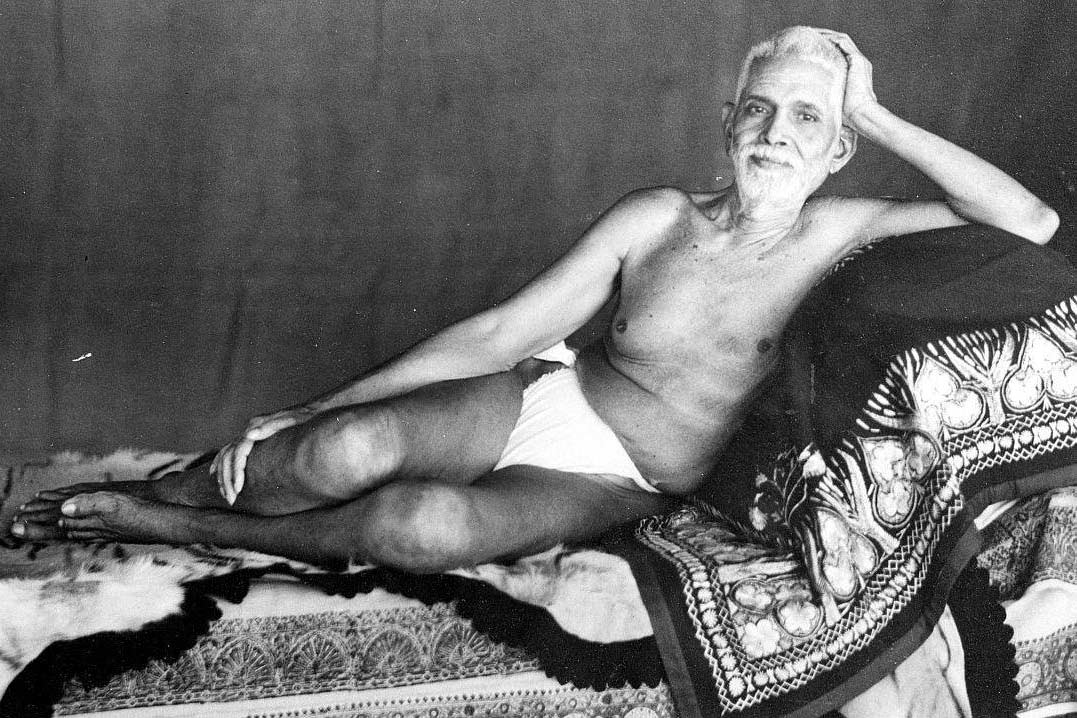
Abandonando el mundo externo, con la mente y la respiración controladas, meditando en Ti en su interior, el yogui percibe tu luz, ¡oh Arunachala! Y encuentra su dicha en Ti.
If the individual is sought he is nowhere to be found. Such is the Guru. Such is Dakshinamurti. What did he do? He was silent; the disciples appeared before him. He maintained silence; the doubts of the disciples were dispelled, which means that they lost their individual identities. That is wisdom and not all the verbiage usually associated with it.
Silence is the most potent form of work. However vast and emphatic the scriptures may be, they fail in their effect. The Guru is quiet and peace prevails in all. His silence is vaster and more emphatic than all the scriptures put together. These questions arise because of the feeling, that having been here so long, heard so much, exerted so hard, one has not gained anything. The work proceeding within is not apparent. In fact the Guru is always within you.
Silence is the best and the most potent Initiation. That was practiced by Sri Dakshinamurti. Touch, look, etc., are all of a lower order. Silence changes the hearts of all. There is no Guru and no disciple. The ignorant confounds his body with the Self and so he takes the other's body for the Guru. But does the Guru think his body to be the Self? He has transcended the body. There are no differences for Him. So the ignorant cannot appreciate the standpoint of Guru and of disciple.
God, who is immanent, in His grace takes pity on the loving devotee and manifests Himself according to the devotee's development. The devotee thinks that He is a man and expects a relationship as between two physical bodies. But the Guru, who is God or the Self incarnate, works from within, helps the man to see the error of his ways and guides him in the right path until he realizes the Self within.
The Master is both 'within' and 'without', so He creates conditions to drive you inward and at the same time prepares the 'interior' to drag you to the Centre. Thus He gives a push from 'without' and exerts a pull from 'within', so that you may be fixed at the Centre.
Guru is the Self. Sometimes in his life a man becomes dissatisfied with it, and, not content with what he has, he seeks the satisfaction of his desires, through prayer to God etc. His mind is gradually purified until he longs to know God, more to obtain His grace than to satisfy his worldly desires. Then, God's grace begins to manifest. God takes the form of a guru and appears to the devotee, teaches him the Truth and, moreover, purifies his mind by association. The devotee's mind gains strength and is then able to turn inward. By meditation it is further purified and it remains still without the least ripple. That calm expanse is the Self.
The Guru is both 'external' and 'internal'. From the 'exterior' he gives a push to the mind to turn inward; from the 'interior' He pulls the mind towards the Self and helps in the quieting of the mind. That is guru's grace. There is no difference between God, Guru and the Self.
You think that the world can be conquered by your own efforts. When you are frustrated externally and are driven inwards, you feel 'Oh! There is a Power higher than man!'
You will know in due course that your glory lies where you cease to exist. In order to gain that State, you should surrender yourself. Then the Master sees that you are in a fit state to receive guidance, and He guides you.
Grace is the Self. That also is not to be acquired: you only need to know that it exists.
One of two things must be done: either surrender yourself, because you realize your inability and need a higher power to help you; or investigate into the cause of misery, go into the Source and so merge in the Self. Either way, you will be free from misery. God or Guru never forsakes the devotee who has surrendered himself.